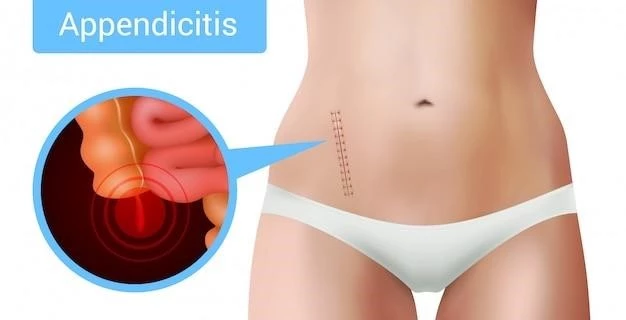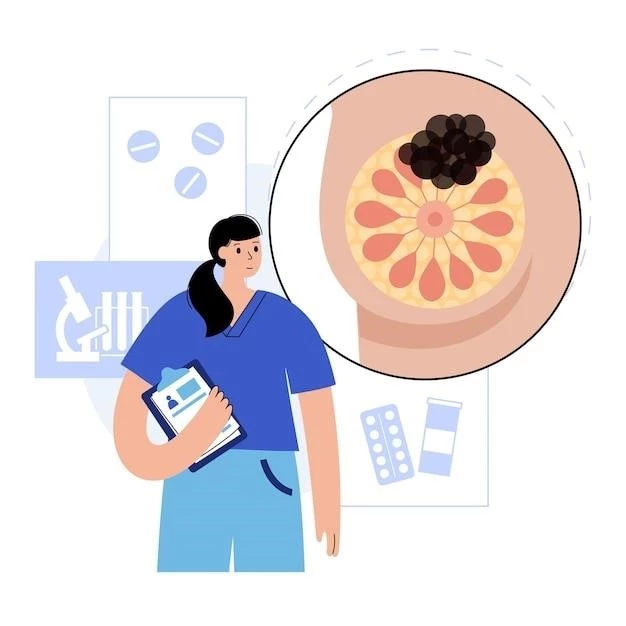This section provides an in-depth exploration of Ceroid Lipofuscinosis‚ covering various aspects of the condition‚ including symptoms‚ genetic causes‚ treatment options‚ research advances‚ early detection‚ support strategies for patients‚ and the impact on families.
Overview of Ceroid Lipofuscinosis
Ceroid Lipofuscinosis is a group of rare inherited neurodegenerative disorders characterized by the abnormal accumulation of lipopigments in various tissues throughout the body‚ particularly in the brain. These lipopigments‚ known as ceroids‚ impair cellular function and lead to progressive neurological decline. The condition primarily affects the nervous system‚ causing symptoms such as vision loss‚ seizures‚ motor impairment‚ and cognitive decline. Ceroid Lipofuscinosis encompasses several subtypes‚ each with distinct genetic causes and clinical presentations.
Causes and Types of Ceroid Lipofuscinosis
Ceroid Lipofuscinosis is caused by genetic mutations that affect enzymes involved in lysosomal function‚ leading to the abnormal accumulation of lipopigments in cells. There are several types of Ceroid Lipofuscinosis‚ including neuronal Ceroid Lipofuscinosis (NCL) and juvenile Ceroid Lipofuscinosis (JNCL)‚ each with specific genetic causes and clinical manifestations. NCL is further classified into different subtypes based on the age of onset and genetic mutations involved‚ highlighting the complexity and heterogeneity of this group of disorders.

Symptoms of Neuronal Ceroid Lipofuscinosis
This section delves into the specific signs and symptoms associated with Neuronal Ceroid Lipofuscinosis.
Common Symptoms in Neuronal Ceroid Lipofuscinosis
Neuronal Ceroid Lipofuscinosis typically presents with a range of symptoms that may include progressive vision loss‚ seizures‚ cognitive decline‚ motor impairment‚ behavioral changes‚ and declining academic performance. Individuals affected by this condition may also experience difficulties with coordination‚ speech‚ and mobility as the disease advances. Additionally‚ NCL can lead to psychiatric symptoms such as anxiety‚ depression‚ and aggression‚ further impacting the quality of life of patients and their families.
Progression of Symptoms in Neuronal Ceroid Lipofuscinosis
The symptoms of Neuronal Ceroid Lipofuscinosis tend to worsen over time‚ with individuals experiencing a gradual decline in neurological function. As the disease progresses‚ affected individuals may develop severe cognitive impairment‚ loss of motor skills‚ complete vision loss‚ and debilitating seizures. The relentless nature of NCL leads to significant disability and challenges in daily living‚ ultimately requiring comprehensive care and support to manage the progression of symptoms effectively.
Genetic Causes of Juvenile Ceroid Lipofuscinosis
This section delves into the underlying genetic factors associated with Juvenile Ceroid Lipofuscinosis.
Inheritance Patterns of Juvenile Ceroid Lipofuscinosis
Juvenile Ceroid Lipofuscinosis follows an autosomal recessive pattern of inheritance‚ meaning that individuals must inherit two copies of the mutated gene ─ one from each parent ─ to develop the condition. Carriers of a single copy of the mutated gene are typically asymptomatic but have the potential to pass the gene on to their offspring. Understanding the inheritance patterns is crucial for genetic counseling and family planning for individuals at risk of carrying or passing on the disease.
Genetic Mutations Associated with Juvenile Ceroid Lipofuscinosis
Juvenile Ceroid Lipofuscinosis is primarily linked to mutations in genes such as CLN3‚ which play a crucial role in lysosomal function and cellular waste disposal. These mutations disrupt normal cellular processes‚ leading to the accumulation of lipopigments and eventual neurodegeneration. Other genetic mutations associated with Juvenile Ceroid Lipofuscinosis‚ including CLN6‚ CLN8‚ and other CLN genes‚ contribute to the complexity of the condition and impact disease progression and severity. Understanding these genetic alterations is essential for accurate diagnosis‚ prognosis‚ and potential therapeutic interventions.
Treatment Options for Ceroid Lipofuscinosis
This section explores the various approaches available for managing Ceroid Lipofuscinosis.
Current Treatment Approaches for Ceroid Lipofuscinosis
Presently‚ the management of Ceroid Lipofuscinosis focuses on symptomatic treatment to alleviate specific symptoms such as seizures‚ cognitive decline‚ and movement impairments. Supportive therapies such as physical and occupational therapy‚ speech therapy‚ and special education programs play a crucial role in enhancing quality of life for patients. Additionally‚ clinical trials are exploring potential disease-modifying treatments to target the underlying pathological processes and slow disease progression. Multidisciplinary care teams collaborate to provide comprehensive care tailored to the individual needs of Ceroid Lipofuscinosis patients.
Ongoing Research into Potential Therapies
Current research initiatives are exploring various potential therapeutic strategies for Ceroid Lipofuscinosis‚ including gene therapy‚ enzyme replacement therapy‚ small molecule drugs‚ and stem cell transplantation. These innovative approaches aim to address the underlying biochemical defects‚ reduce lipopigment accumulation‚ and slow down disease progression. Preclinical studies and clinical trials are underway to evaluate the safety and efficacy of these emerging therapies‚ offering hope for improved outcomes and a better quality of life for individuals affected by this devastating condition.
Research Advances in Neuronal Ceroid Lipofuscinosis
This section highlights the latest developments in understanding and treating Neuronal Ceroid Lipofuscinosis.
Recent Breakthroughs in Understanding Neuronal Ceroid Lipofuscinosis
Recent research has elucidated novel mechanisms underlying Neuronal Ceroid Lipofuscinosis pathogenesis‚ shedding light on disease progression and potential therapeutic targets. Advances in imaging technologies and biomarker identification have improved diagnostic accuracy and monitoring of disease progression. Furthermore‚ studies exploring gene editing techniques and personalized medicine approaches offer promising avenues for tailored interventions. These breakthroughs enhance our understanding of NCL and pave the way for more effective treatments to improve patient outcomes.
Promising Areas of Research in Neuronal Ceroid Lipofuscinosis
Current research in Neuronal Ceroid Lipofuscinosis is focused on several promising areas‚ including targeted gene therapies to correct genetic mutations‚ neuroprotective strategies to preserve neuronal function‚ and innovative drug delivery systems to enhance treatment efficacy. Additionally‚ investigations into disease-modifying approaches‚ such as stem cell therapy and gene editing technologies‚ offer new possibilities for slowing disease progression and improving patient outcomes. These research endeavors hold great potential for advancing the understanding and management of Neuronal Ceroid Lipofuscinosis.
Early Detection of Juvenile Ceroid Lipofuscinosis
This section emphasizes the importance of timely identification of Juvenile Ceroid Lipofuscinosis.
Diagnostic Methods for Early Detection of Juvenile Ceroid Lipofuscinosis
Early detection of Juvenile Ceroid Lipofuscinosis often involves a combination of clinical assessments‚ neuroimaging studies‚ and genetic testing. Clinical features such as visual impairment‚ seizures‚ developmental regression‚ and behavioral changes may raise suspicion for the condition. Neuroimaging techniques like MRI can reveal brain atrophy and abnormal signals. Genetic testing plays a critical role in confirming the diagnosis by identifying specific mutations associated with Juvenile Ceroid Lipofuscinosis‚ enabling prompt intervention and tailored management strategies.
Importance of Early Intervention in Juvenile Ceroid Lipofuscinosis
Timely intervention in Juvenile Ceroid Lipofuscinosis is crucial to optimize outcomes and quality of life for affected individuals. Early diagnosis allows for the implementation of targeted therapies‚ supportive interventions‚ and access to specialized care services. By initiating treatment promptly‚ healthcare providers can better manage symptoms‚ slow disease progression‚ and improve overall well-being. Additionally‚ early intervention provides opportunities for families to receive comprehensive support and guidance‚ enhancing the overall care experience for both patients and caregivers.
Support Strategies for Ceroid Lipofuscinosis Patients
This section explores essential support strategies designed to assist Ceroid Lipofuscinosis patients.
Multidisciplinary Approach to Care for Ceroid Lipofuscinosis Patients
Effective care for Ceroid Lipofuscinosis patients involves a multidisciplinary team comprising neurologists‚ geneticists‚ ophthalmologists‚ speech therapists‚ physical therapists‚ and psychologists. This collaborative approach ensures comprehensive assessment‚ personalized treatment plans‚ and holistic support for patients and families. Care coordination among specialists facilitates timely interventions‚ symptom management‚ and ongoing monitoring to address the complex needs of individuals living with Ceroid Lipofuscinosis. By integrating diverse expertise‚ the multidisciplinary team aims to optimize patient outcomes and enhance their overall quality of life.
Psychosocial Support for Patients and Families
Psychosocial support services play a crucial role in addressing the emotional‚ social‚ and mental well-being of Ceroid Lipofuscinosis patients and their families. Counseling‚ support groups‚ and specialized resources can help individuals cope with the challenges of the disease‚ manage stress‚ and enhance their resilience. Providing education‚ advocacy‚ and access to community resources empowers families to navigate the complexities of Ceroid Lipofuscinosis and foster a supportive environment for their loved ones. By addressing psychosocial needs‚ healthcare teams can improve overall patient and family satisfaction and promote a sense of empowerment and connectedness within the community.
Impact of Ceroid Lipofuscinosis on Families
This section delves into the profound effect Ceroid Lipofuscinosis has on affected families.
Challenges Faced by Families Caring for Ceroid Lipofuscinosis Patients
Families of Ceroid Lipofuscinosis patients encounter significant challenges‚ including emotional distress‚ financial burdens‚ caregiver burnout‚ and the constant need for specialized care. Balancing caregiving responsibilities with work and other family obligations can be overwhelming‚ leading to increased stress and impact on mental health. Navigating complex healthcare systems‚ coordinating appointments‚ and advocating for appropriate services also pose additional obstacles. The long-term care needs of individuals with Ceroid Lipofuscinosis demand a resilient and supportive family network to effectively address the multifaceted challenges associated with the disease.
Coping Mechanisms and Resources for Families Affected by Ceroid Lipofuscinosis
Families impacted by Ceroid Lipofuscinosis can benefit from various coping mechanisms and support resources. These may include engaging in counseling‚ joining support groups‚ accessing respite care services‚ and connecting with other families facing similar challenges. Utilizing community resources‚ such as home healthcare services and educational workshops‚ can provide valuable support and information. Additionally‚ incorporating self-care practices and maintaining open communication within the family unit can foster resilience and a sense of unity in navigating the complexities of caring for a loved one with Ceroid Lipofuscinosis.
